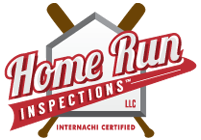Indoor Air Quality

Indoor air quality is generally worse than most people believe, but there are things you can do about it.
Some Quick Facts:
- Indoor air quality can be worse than that of outdoor air.
- Problems can arise from moisture, insects, pets, appliances, radon, materials used in household products and furnishings, smoke, and other sources.
- Effects range from minor annoyances to major health risks.
- Remedies include ventilation, cleaning, moisture control, inspections, and following manufacturers’ directions when using appliances and products.
- Many homes are built or remodeled more tightly, without regard to the factors that assure fresh and healthy indoor air circulation. Many homes today also contain furnishings, appliances and products that can affect indoor air quality.
Signs of indoor air quality problems include:
- Unusual and noticeable odors
- Stale or stuffy air and a noticeable lack of air movement
- Dirty or faulty central heating or air-conditioning equipment
- Damaged flue pipes and chimneys
- Unvented combustion air sources for fossil-fuel appliances
- Excessive humidity
- Presence of molds and mildew
- Adverse health reactions after remodeling, weatherizing, bringing in new furniture, using household and hobby products
- Feeling noticeably healthier outside
Common Sources of Air Quality Problems:
Poor indoor air quality can arise from many sources. At least some of the following contaminants can be found in almost any home:
- Moisture and biological pollutants, such as molds, mildew, dust mites, animal dander, and cockroaches
- High humidity levels, inadequate ventilation, and poorly maintained humidifiers and air conditioners
- Combustion products, including carbon monoxide from unvented fossil-fuel space heaters, unvented gas stoves and ovens, and back-drafting from furnaces and water heaters
- Formaldehyde from durable-press draperies and other textiles, particleboard products, such as cabinets and furniture framing, and adhesives used in composite wood furniture and upholstery
- Radon, which is a radioactive gas from the soil and rock beneath and around the home’s foundation, groundwater wells, and some building materials
- Household products, such as paints, solvents, air fresheners, hobby supplies, dry-cleaned clothing, aerosol sprays, adhesives, and fabric additives used in carpeting and furniture, which can release volatile organic compounds (VOCs);
asbestos, which is found in most homes more than 20 years old. Sources include deteriorating, damaged and disturbed pipe insulation, fire retardant, acoustical ceiling tiles, and floor tiles - Lead from lead-based paint dust, which is created when removing paint by sanding, scraping or burning
- Particulates from dust and pollen, fireplaces, wood stoves, kerosene heaters, and unvented gas space heaters
- Tobacco smoke, which produces particulates, combustion products and formaldehyde
Tips for Homeowners:
- Ask about formaldehyde content before buying furniture, cabinets and draperies.
- Promptly clean and dry water-damaged carpet, or remove it altogether.
- Vacuum regularly, especially if you have pets, and consider using area rugs instead of wall-to-wall carpeting. Rugs are easier to remove and clean, and the floor underneath can also be easily cleaned.
- Eliminate unwanted moisture intrusion by checking for sources (such as holes and cracks in the basement and other areas, and leaks from appliances), and by using a dehumidifier.
- Open windows and use fans to maintain fresh air with natural and mechanical air circulation.
- Always open the flue damper before using the fireplace. This will also prevent carbon-monoxide poisoning.
- If your air conditioner has a water tray, empty and clean it often during the cooling season.
- If you smoke, smoke outdoors and away from any windows and doors.
- Use the range vent above your stove whenever you cook.
- Use the bathroom vent whenever you use the bathroom.
- Don’t leave vehicles or lawn care equipment running in your garage. Make sure the door leading from the home to the garage has a door sweep to help keep out vapors.
Your InterNACHI inspector can recommend more ways to help you maintain healthy indoor air quality for you and your family
Home Run Inspections, LLC
Oklahoma: 405-905-9175
Florida: 850-203-3239
We Cover All the Bases!
Serving the Oklahoma City metro and surrounding areas including Edmond, Yukon, Piedmont, Bethany, El Reno, Tuttle, Mustang, Moore, Norman, Midwest City, Del City, Choctaw, McCloud, Shawnee, Harrah, Newalla, Jones, and more.
Also Now Serving the Florida Panhandle metro areas including Destin, Fort Walton Beach, Okaloosa Island, Miramar Beach, Santa Rosa Beach, Niceville, Shalimar, Freeport, Crestview, DeFuniak Springs, Panama City Beach, and more.
Schedule Your Inspections Online at:
Like us on FaceBook
Follow us on Twitter
Follow us on Instagram


